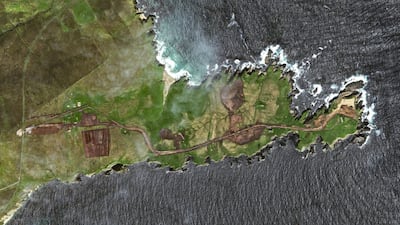
Lamba Ness in Unst. PA

An illustration of a mock rocket taking off from Lamba Ness in Unst, one of Scotland's Shetland Islands. PA

An illustration of the UK Pathfinder Rocket launch. Photo: Lockheed Martin

An aerial view of the SaxaVord site in the Shetland Islands. Photo: SaxaVord

Former British prime minister Boris Johnson walks around the stall for SaxaVord during a visit to the Farnborough International Airshow in July. PA

Lamba Ness in Unst. PA

An illustration of a mock rocket taking off from Lamba Ness in Unst, one of Scotland's Shetland Islands. PA

An illustration of the UK Pathfinder Rocket launch. Photo: Lockheed Martin

An aerial view of the SaxaVord site in the Shetland Islands. Photo: SaxaVord

Former British prime minister Boris Johnson walks around the stall for SaxaVord during a visit to the Farnborough International Airshow in July. PA

Lamba Ness in Unst. PA
Blast-off for Britain's ambitious space programme
A Shetland Islands spaceport has been thrust into the spotlight with a plan to launch 30 rockets a year skywards

Thomas Harding
14 October, 2022
- Listen In English
- Listen In Arabic